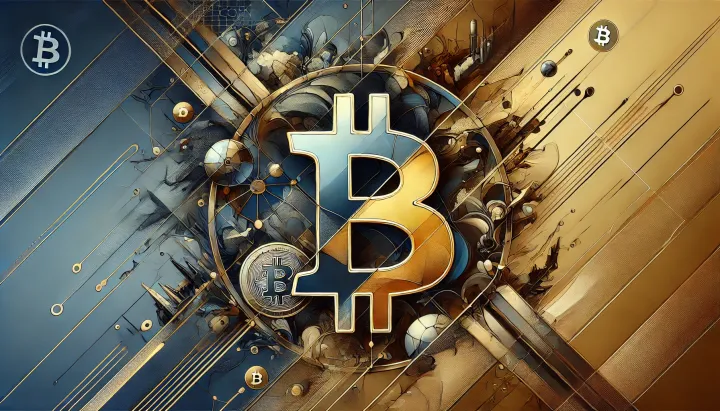Quantum Risk and Bitcoin’s Governance Challenge
The September 11, 2025 episode of the Isabel Foxen Duke podcast features Jameson Lopp examining how quantum computing could endanger Bitcoin’s elliptic curve cryptography and unlock vulnerable Satoshi-era coins.

- My 'briefing notes' summarize the content of podcast episodes; they do not reflect my own views.
- They contain (1) a summary of podcast content, (2) potential information gaps, and (3) some speculative views on wider Bitcoin implications.
- Pay attention to broadcast dates (I often summarize older episodes)
- Some episodes I summarize may be sponsored: don't trust, verify, if the information you are looking for is to be used for decision-making.
Summary
The September 11, 2025 episode of the Isabel Foxen Duke podcast features Jameson Lopp examining how quantum computing could endanger Bitcoin’s elliptic curve cryptography and unlock vulnerable Satoshi-era coins. Lopp argues that while cryptographically relevant quantum computers remain distant, uncertainty around timing erodes market confidence. He outlines a phased plan for migration, coin freezes, and recovery mechanisms, stressing that ossification and governance friction pose the greater long-term risks.
Take-Home Messages
- Quantum Timeline Uncertainty: Sudden breakthroughs could shorten preparation windows and trigger market fear.
- Vulnerable Supply Exposure: Up to six million coins tied to public key reuse or early addresses remain at risk.
- Confidence Over Technology: Even limited theft could erode trust and cause widespread liquidation.
- Phased Soft-Fork Path: Migration, freezes, and zero-knowledge recovery mechanisms form a proposed defense.
- Governance Constraints: Bitcoin’s ossification and political contention may block timely adoption of protections.
Overview
Jameson Lopp opens by stating that today’s machines are several orders of magnitude short of a “cryptographically relevant” quantum computer, yet he cautions that discrete breakthroughs in error correction or algorithms can compress timelines faster than governance can react. The practical risk, he argues, is not a surprise flip of physics but the way uncertainty itself distorts behavior and capital allocation. Preparation therefore becomes a confidence exercise as much as an engineering problem.
The discussion quantifies exposure across early pay-to-pubkey outputs, address reuse, and mirrored coins on forks, yielding a vulnerable pool on the order of millions of bitcoin. Even modest theft, he notes, could catalyze panic selling because markets trade on narratives long before they trade on proofs. In this framing, systemic risk emerges from confidence shock rather than the attacker’s ability to cleanly liquidate large balances.
Contingent on deploying post-quantum address types first, Lopp sketches a phased soft-fork path that signals and then enforces migration. Phase one would reject new transactions that lock to vulnerable scripts, creating a visible failure mode that forces users and services to update. Phase two would later block legacy spends entirely, freezing exposed outputs to remove the overhang that fuels fear.
To address property-rights objections, he proposes a recovery path in which rightful owners present a legacy signature plus a zero-knowledge proof tied to a deterministic wallet root, separating genuine control from quantum key recovery. He acknowledges the political and technical weight of introducing a ZK-verify opcode and the need to minimize new attack surface. Finally, he flags trade-offs—larger keys and signatures, Layer 2 redesigns—and warns that ossification, not mathematics, may be the binding constraint on timely upgrades.
Stakeholder Perspectives
- Core Developers: Demand narrowly scoped, technically sound changes with minimal risk of new vulnerabilities.
- Wallet Providers: Require clear standards for migration and tools that prevent unsafe address reuse.
- Exchanges and Custodians: Must manage coin taint, liquidity disruptions, and communication during quantum scares.
- Long-Term Holders: Seek assurances that frozen assets can be recovered without violating property rights.
- Policy and Standards Bodies: Track Bitcoin’s progress alongside broader post-quantum adoption across finance and government.
Implications and Future Outlook
Quantum preparedness highlights a paradox: the greatest risk lies not in cryptographic failure today but in eroded confidence tomorrow. If markets believe large supplies are vulnerable, price shocks could emerge even before quantum computers become capable (note that this is exactly what we saw in our own price modeling working paper, which included a hypothetical quantum attack that drained almost 1-million Bitcoin in 2030 - supply side impacts were relatively modest but market demand collapse could have severe impacts). Proactive communication and phased migrations offer the best path to manage this perception risk.
Trade-offs from post-quantum adoption will reopen divisive scaling debates. Larger keys and signatures challenge Bitcoin’s efficiency, forcing reconsideration of block-size constraints and Layer 2 dependencies. Technical preparation must therefore be matched with political compromise to avoid governance deadlock.
Ossification compounds these challenges by slowing protocol change as adoption grows. Without timely consensus, decentralized governance may yield to centralized stopgaps, weakening sovereignty. Maintaining adaptability while preserving security is the long-term test of Bitcoin’s resilience in a quantum age.
Some Key Information Gaps
- What signals or milestones should determine when Bitcoin must act on quantum readiness? Clear criteria are needed to avoid premature changes or dangerous delays.
- What scenarios best capture the systemic risk posed by six million vulnerable coins? Modeling systemic exposure informs both market response and policy preparedness.
- What frameworks can balance property rights with freezing or burning vulnerable coins? Governance legitimacy hinges on reconciling libertarian principles with systemic stability.
- Which post-quantum cryptographic schemes offer the most viable balance of efficiency and security? Choosing trade-offs determines scalability and usability of future upgrades.
- What are the technical pathways for integrating zero-knowledge proofs into Bitcoin? Feasibility and political acceptance of ZK integration define recovery options.
Broader Implications for Bitcoin
Confidence as a Systemic Variable
Quantum risk underscores that Bitcoin’s value depends as much on perceived certainty as on mathematics. This dynamic highlights the fragility of market confidence when unresolved tail risks loom. Broader adoption by institutions will hinge on credible assurances that governance can act decisively under uncertainty.
Governance Under Ossification
Bitcoin’s decentralized governance is both its strength and vulnerability. As the network ossifies, the cost of upgrades rises, risking reliance on centralized or extra-protocol fixes. The broader implication is that ossification could weaken sovereignty, forcing compromises that undermine Bitcoin’s foundational ethos.
Property Rights and Collective Security
Debates over freezing or recovering vulnerable coins illuminate the tension between inviolable property rights and systemic stability. If consensus emerges that collective action outweighs individual claims, Bitcoin’s cultural norms may shift. This broader implication extends to other domains where distributed systems face existential risks.
Technical Debt and Layer 2 Fragility
Post-quantum migration would cascade beyond the base layer, forcing redesigns of Layer 2 systems. This illustrates how technical debt compounds over time, especially under ossification. Broader implications include constraints on innovation and reduced flexibility for scaling solutions.
Global Standardization Pressures
Governments and financial institutions are already preparing for post-quantum transitions. If Bitcoin lags, its credibility as a reserve asset could weaken relative to centralized systems. The broader implication is that Bitcoin must align with global standards to remain viable in long-term monetary competition.



Comments ()